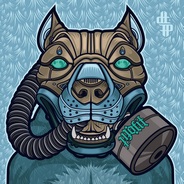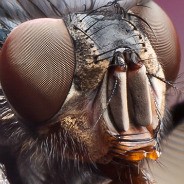текст А. Разделите текст на 4 части и выразите основную мысль каждой из них .
The Circulatory (Cardiovascular) System
1. The cardiovascular system is the system of blood circulation. By the cardiovascular system we mean the heart, the arteries, the veins and the capillaries of the human body.
2. The centre of the circulatory system is the heart. The human heart is a cone-shaped organ, about 5 inches1 long and 3 1/2 inches broad. It weighs about 10 ounces2 in the adult male, 6 ounces in the female. It lies in the thoracic cavity, just behind the breastbone and between the lungs. The heart is a hollow muscle which has four chambers. The right heart consists of an upper chamber, the atrium or the auricle and a lower chamber, the ventricle. Between these two chambers is a one-way valve, the tricuspid valve. The left heart has two chambers, but the valve that separates its chambers we call the mitral valve. Although the heart is a unit, anatomically and functionally, we may think of it as of two pumps - the «right heart» and the «left heart». The right heart receives blood from the veins and pumps it into the lungs by way of the lesser circulatory system. In the lungs the blood receives oxygen. Then it moves into the left heart. From the left heart the well-oxygenated blood moves into a large artery, the aorta. The blood returns to the heart by means of the veins. The walls of the capillaries are so thin that the dissolved nourishment that has come from the digestive system and the oxygen that has come from the lungs can pass through them into the tissues of the body and so nourish it. The capillaries form a close network all over the body. They gradually join together and get larger, and become veins.
3. Blood vessels that receive blood from the ventricle and lead it away from the heart and towards other organs are arteries («air duct» - Greek). The vessels received this name because the early anatomists assumed that they had been empty in dead persons and had carried air.The artery that takes up the blood from the right ventricle and carries it to the lungs is the pulmonary artery («lungs» - Latin). The pulmonary artery divides in two - one branch leads to the right lung, the other - to the left. The arteries continue to divide and subdivide and form smaller and smaller vessels with thinner and thinner walls. The smallest arteries are the arterioles and these finally divide into capillaries («hairlike» - Latin). We name them so because of their fineness, though actually they are much finer than hairs.
4. Gradually the capillaries begin to join into larger vessels. Such larger blood vessels that carry blood to the heart from the organs are the veins. The smallest of these are the venules.
5. The particular vein into which the capillaries and venules of the lungs finally unite is the pulmonary vein. The pulmonary vein carries the freshly oxygenated blood to the left auricle. The pulmonary artery and pulmonary vein make up the pulmonary circulation.
6. The contraction of the left ventricle forces the blood through a one-way valve into the aorta («to lift up» - Greek). The aorta is the largest artery in the body. It moves upward at first (the ascending aorta), but then arches over dorsally (the arch of the aorta). In its downward course, the aorta passes through the diaphragm.
7. The blood is a red fluid, which coagulates when escapes from a blood vessel. It consists of a colourless fluid, plasma or serum, and many millions of minute bodies, the corpuscles.
165
329
Ответы на вопрос:
Смысл понятия «плотность вещества». плотность показывает, чему равна масса вещества, взятого в объёме 1 м3 смыслом плотности является число, показывающее, чему равна масса тела в кг (или г), взятого в объеме 1 м3 . чтобы найти плотность вещества, надо массу тела разделить на его объём.
Популярно: Английский язык
-
Задания по теме « The Past Perfect Tense» Упражнение I . Раскройте скобки: 1...
 nikputen125.02.2022 05:11
nikputen125.02.2022 05:11 -
ARBORIB th TH AHIR LES LEED PAPER SURES LAT SETH One LOC THE 15 BO PI EE nerin...
 trunczova8416.02.2023 14:27
trunczova8416.02.2023 14:27 -
Нужно до 15:00 по мск. Буду очень благодарна за...
 bun318.02.2020 18:58
bun318.02.2020 18:58 -
Listen and complete.Then talk with your friend...
 Belatrissa1114.03.2021 12:27
Belatrissa1114.03.2021 12:27 -
Complete the sentences with the correct form of the verb to be(поставь нужную...
 Dmitro22213.05.2020 22:30
Dmitro22213.05.2020 22:30 -
Расшифруй буквы, чтобы составить слова, описывающие элементы фильма...
 Ниа1508200629.04.2022 22:52
Ниа1508200629.04.2022 22:52 -
What is the writer doing in this text?A.describing a group s habitat . B. explaining...
 MashaSay05.01.2022 02:52
MashaSay05.01.2022 02:52 -
Как произносится по петух не умеет плавать...
 liq235423418.11.2021 12:16
liq235423418.11.2021 12:16 -
Диалог двух парней в книжном магазине, и как уже ясно о чтении, любимоц книге...
 Ketti0803.04.2023 11:46
Ketti0803.04.2023 11:46 -
Краткая инструкция о космосе. вы должны,вам...
 Lunit27.03.2020 18:41
Lunit27.03.2020 18:41
